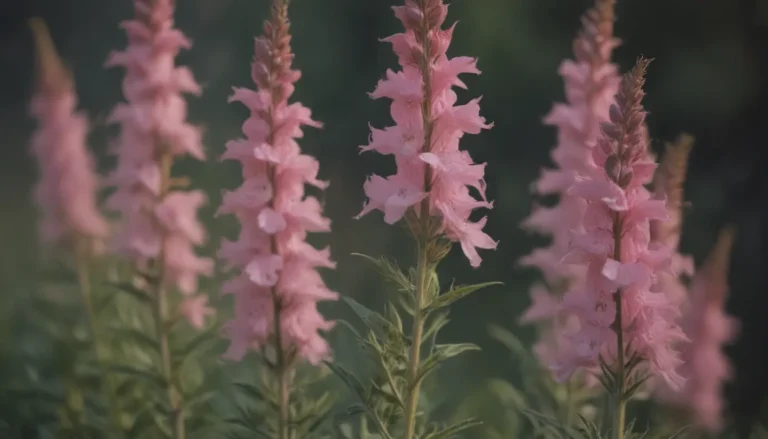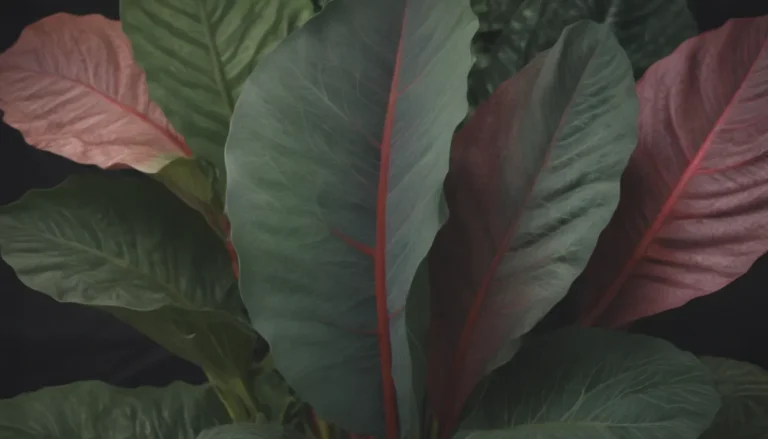Best Perennials for Full Sun: A Comprehensive Guide

Are you looking to add some color and life to your garden but not sure which plants will thrive in full sun conditions? Look no further! In this in-depth guide, we will explore the top 12 perennials that love basking in the sunlight. From yellow alyssum to English lavender, these plants will bring beauty and vibrancy to your outdoor space all year round.
Understanding Full Sun Requirements
Before we dive into the best perennials for full sun, let’s understand what it means for a plant to thrive in these conditions. Full sun is defined as receiving at least six to eight hours of direct sunlight on most days. However, some plants may need a little sun protection during the hottest part of the day. It’s also essential to note that moisture requirements may vary among full sun perennials; some can tolerate dry conditions, while others need moist soil. Knowing the specific needs of your plants will help them flourish in your garden.
Tip: Research Your Plants Bloom Cycle
One key tip to keep in mind when selecting perennial plants is to research their bloom cycle. Knowing exactly when your plants will bloom allows you to plan your garden design accordingly, ensuring that something is always flowering from spring to fall.
1. Yellow Alyssum (Aurinia saxatilis)
USDA Growing Zones:
Color Varieties: Yellow
Sun Exposure: Full sun
Soil: Well-draining
Yellow alyssum, also known as Basket-of-gold, is a low-growing flowering ground cover that adds a pop of color to any garden. With bright yellow flowers in the spring, this plant is perfect for areas where you want it to spread and cover unsightly patches. To maintain its shape, be sure to trim it back after flowering and avoid over-watering.
2. Snow-in-Summer (Cerastium tomentosum)
USDA Growing Zones:
Color Varieties: White
Sun Exposure: Full sun
Soil: Well-draining
Snow-in-summer is a rock garden favorite with white flowers against a backdrop of silver foliage. This low-growing perennial spreads beautifully over sunny areas and pairs well with colorful blooms like roses and coneflowers. To prevent self-seeding, remove faded blooms in late spring.
3. Lamb’s Ear (Stachys byzantina)
USDA Growing Zones:
Color Varieties: Silver
Sun Exposure: Full sun
Soil: Well-draining
Lamb’s ear is a low-maintenance plant with velvety leaves that are soft to the touch. It thrives in dry soil conditions and is deer-resistant. Bees are attracted to its tiny purplish-pink blooms in late spring, so be sure to provide well-drained soil to prevent rot and diseases.
4. Hens and Chicks (Sempervivum tectorum)
USDA Growing Zones:
Color Varieties: Green, Red
Sun Exposure: Full sun
Soil: Well-draining
Hens and chicks is a succulent that can tolerate drought and rocky soil. With good drainage and minimal watering, this hardy perennial can thrive in various conditions. Be sure to remove blooming rosettes to allow offspring plants to fill in the gaps.
5. ‘Autumn Joy’ Stonecrop (Hylotelephium ‘Herbstsfreude’)
USDA Growing Zones:
Color Varieties: Pale Pink
Sun Exposure: Full sun
Soil: Well-draining
‘Autumn Joy’ stonecrop is a late-blooming perennial that adds interest to your garden in the fall. With pale pink blooms in September through October, this plant attracts bees and serves as a source of food for pollinators. To maintain sturdy plants, trim back foliage in late spring and mid-summer.
6. Yarrow (Achillea millefolium)
USDA Growing Zones:
Color Varieties: White, Pink, Red, Yellow
Sun Exposure: Full sun
Soil: Well-draining
Yarrow produces beautiful flat-topped flowers in a variety of colors and is particularly attractive to butterflies. Be prepared for this plant to spread, so give it some room to grow. Removing faded blooms during the growing season can encourage additional blooming and keep its shape in check.
7. Shasta Daisy (Leucanthemum x superbum ‘Becky’)
USDA Growing Zones:
Color Varieties: White
Sun Exposure: Full sun
Soil: Well-draining
Shasta daisies make a bold statement in the garden with their ray-like petals and bright yellow disks. Thriving in dry, sunny areas, these perennials can withstand cold snaps but may struggle in wet soil. Be sure to remove faded flowers to encourage re-blooming.
8. Black-Eyed Susan (Rudbeckia hirta)
USDA Growing Zones:
Color Varieties: Yellow
Sun Exposure: Full sun
Soil: Well-draining
Black-eyed Susan is a prolific self-sower that can quickly take over your garden. To prevent overcrowding and disease, remove extra plants or divide them to provide ample airflow. Deadheading faded blooms can also help control self-seeding.
9. Threadleaf Coreopsis (Coreopsis verticillata ‘Moonbeam’)
USDA Growing Zones:
Color Varieties: Yellow
Sun Exposure: Full sun
Soil: Well-draining
Threadleaf coreopsis, also known as tickseed, blooms from June to August and can spread aggressively via underground rhizomes and self-seeding. To prevent self-seeding, remove faded blooms and consider pruning the plant in late summer for a fall rebloom.
10. English Lavender (Lavandula angustifolia)
USDA Growing Zones:
Color Varieties: Purple
Sun Exposure: Full sun
Soil: Well-draining
English lavender is not only beautiful with its purple blooms and wispy foliage but also serves as a natural pest repellent. Harvest the aromatic herb to enjoy its scent indoors and make sachets for a lovely fragrance in your home. Prune lavender in spring to shape the plant and remove faded flower stalks to prolong flowering.
11. Catnip (Nepeta cataria)
USDA Growing Zones:
Color Varieties: White, Purple
Sun Exposure: Full sun
Soil: Well-draining
Catnip is an edible perennial loved by many cats for its essential oil. Tolerant of drought and a little shade, this plant thrives in well-drained soil. Be sure to remove faded flower spikes to encourage further blooming and divide established plants when necessary.
12. Salvia (Salvia spp.)
USDA Growing Zones:
Color Varieties: Blue, Purple, Pink
Sun Exposure: Full sun
Soil: Well-draining
Salvia is a popular perennial for full sun conditions, with various cultivars in the blue-violet color range. Some hardier cultivars include ‘May Night,’ ‘Caradonna,’ and ‘Blue Hill.’ To encourage further blooming, remove faded flower spikes throughout the growing season.
Final Thoughts
Incorporating these 12 best perennials for full sun into your garden can add color, texture, and interest to your outdoor space. Remember to research each plant’s specific needs, including sunlight and moisture requirements, to ensure they thrive in your garden. With a little care and attention, your garden will be bursting with life and beauty throughout the year. Happy gardening!





